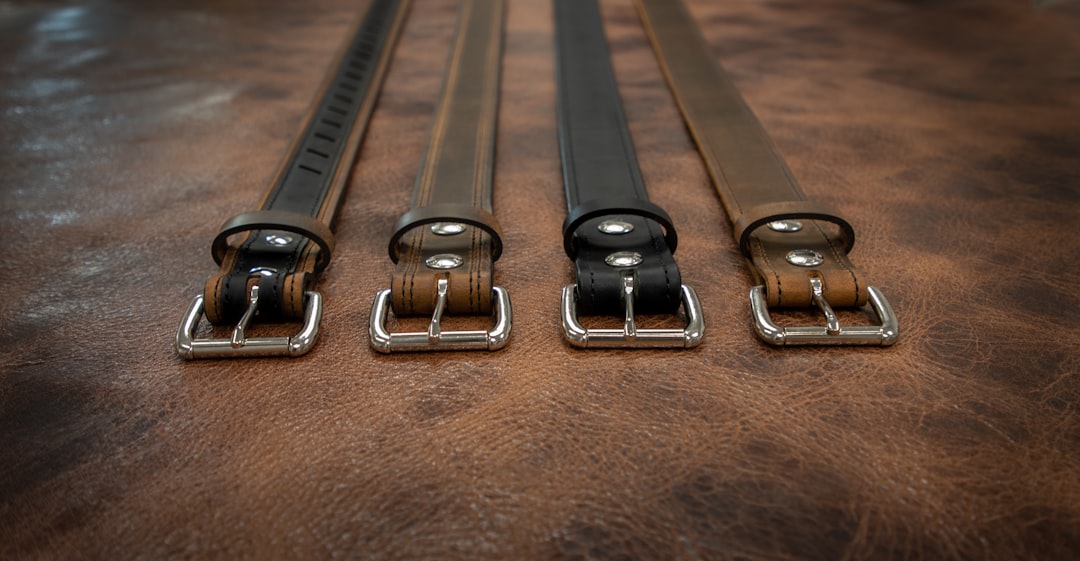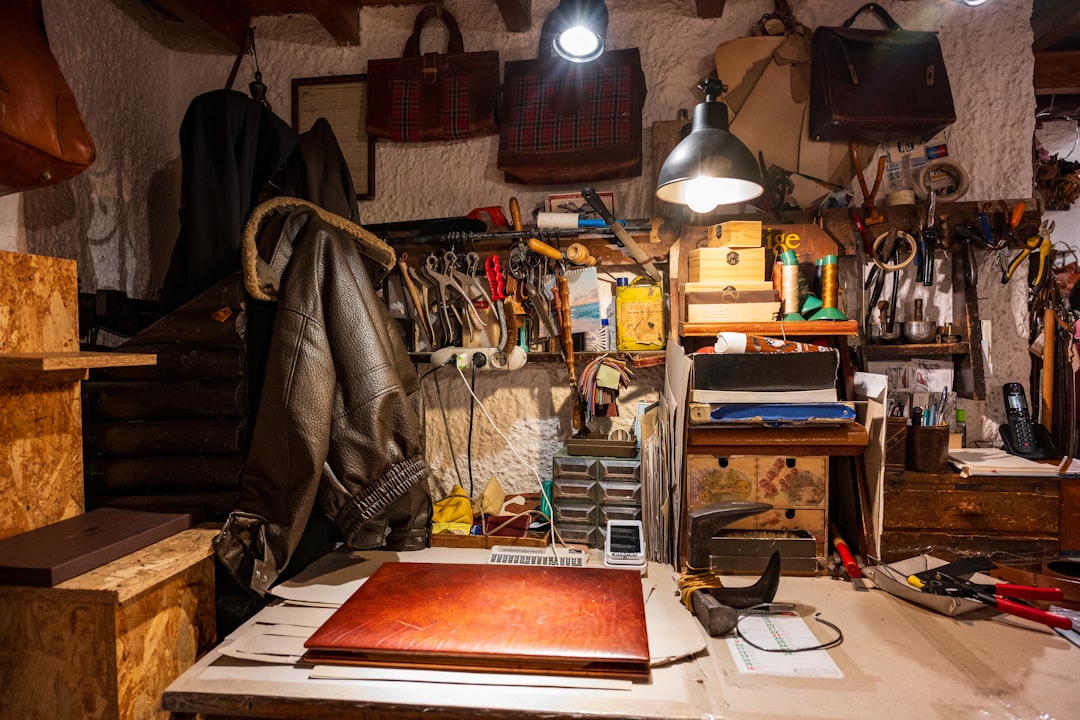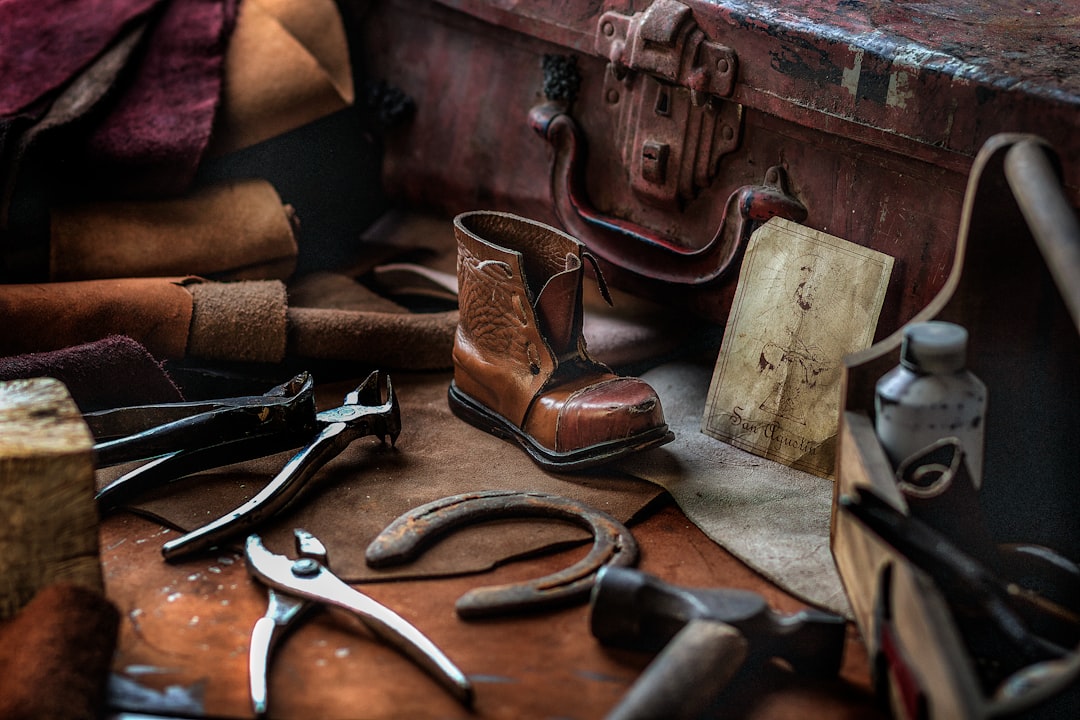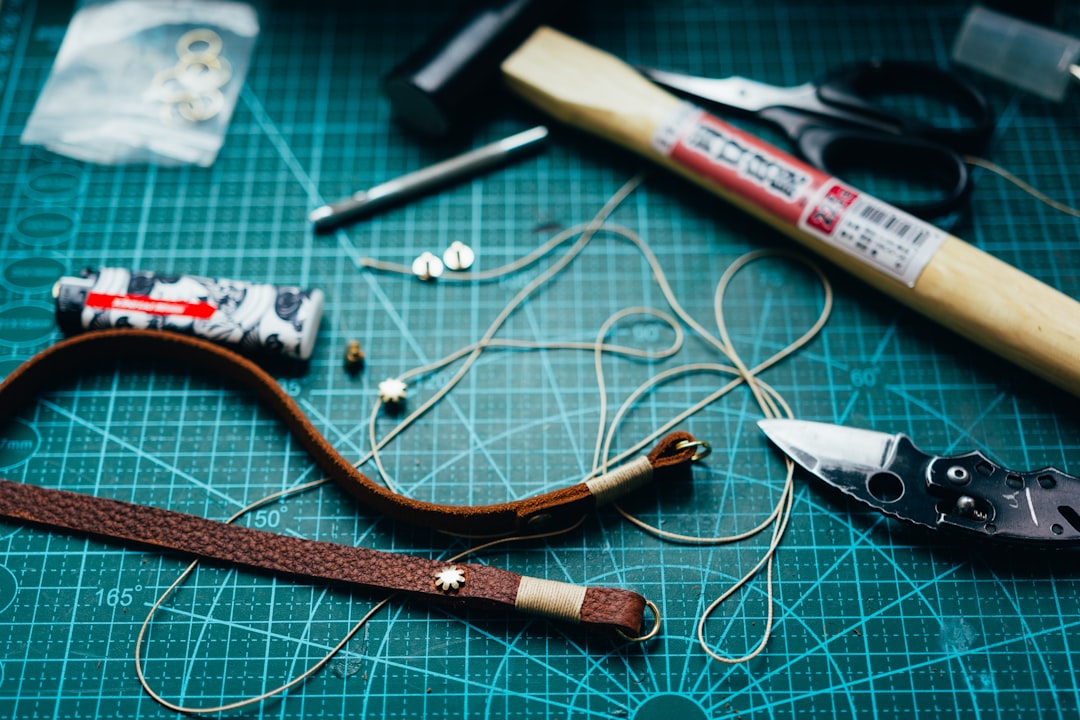

Engage prospects with a scan and streamline customer engagement with FREE QR code marketing tools by Sona – no strings attached!
Create a Free QR CodeFree consultation

No commitment

Engage prospects with a scan and streamline customer engagement with FREE QR code marketing tools by Sona – no strings attached!
Create a Free QR CodeFree consultation

No commitment
In today’s digitally driven world, QR codes have evolved from a novelty to a strategic powerhouse that bridges offline engagement with online action. For leather goods repair services, QR codes create a seamless way to boost conversions, streamline customer interactions, and capture measurable data without the friction of app downloads or complex onboarding. As consumer expectations for speed and convenience rise, these small square patterns turn every surface into a gateway for booking, quoting, tracking, and feedback.
Leather repair providers can replace stacks of paper intake forms, analog repair slips, and generic brochures with scan-to-engage experiences. This shift tackles a long-standing challenge: high-value prospects who browse or walk in often leave no digital footprint. With QR codes, a prospect can instantly request a quote, book a repair, view service menus, track order status, or leave a review, all from a single scan. That reduces drop-off risk and ensures fewer opportunities slip through the cracks. For reputation building, route scanners to leave Google reviews.
Add dynamic management, measurement, and CRM enrichment, and it becomes clear why QR technology is reshaping leather restoration and maintenance. Teams can update offers in real time, attribute scans to campaigns, and retarget by intent, transforming once-invisible offline interactions into reliable growth signals with Sona QR’s product overview.

Leather repair shops often lose high-intent clients because of friction in analog processes. People compare providers in person, pick up a business card, then leave without filling out a form. QR codes convert these physical touchpoints into instant digital actions, reducing friction while increasing the flow of measurable leads. When you pair QR scans with clear calls to action and a streamlined landing experience, conversion rates typically rise across quoting, booking, and repeat purchases.
The path to higher conversions is simple: identify the moments where prospects hesitate or drop out, place QR codes at those exact points, and route scanners to high-value actions. Replace slow or manual tasks with scan-to-book, scan-to-quote, and scan-to-track experiences. This reduces staff workload, improves data quality, and increases customer satisfaction by meeting people where they are.
Actionable steps:
Well-mapped QR strategies replace clunky, analog steps with instant digital actions. The result is higher data capture, lower operational friction, and a conversion lift at every stage of the customer journey.

Leather goods repair businesses face a persistent gap between offline and online engagement. Prospects often discover your services through walk-ins, printed flyers, or word-of-mouth referrals, then leave without booking or sharing contact details. That makes it difficult to attribute interest, follow up with offers, and prove which marketing efforts are working.
QR codes make every offline touchpoint actionable. They let customers move from “I am interested” to “I took action” in seconds. When a code sits on a window sign, appointment card, or repair ticket, it offers a fast path to requesting a quote, booking an appointment, or viewing repair status. The barrier to action drops, the likelihood of conversion rises, and the business gains the data needed for attribution.
By integrating QR codes into everyday materials, leather repair businesses convert casual interest into measurable outcomes. The result is better customer experience, stronger attribution, and smarter allocation of marketing spend.

Leather services capture more value when they match the right QR format to the right action. The goal is to reduce friction for the customer and improve data integrity for the business. Start by selecting the destination that best fits the customer’s need at that moment, then decide whether a static or dynamic code is appropriate.
For most repair shops, web links, forms, and SMS or email deep links will deliver the highest impact. These formats facilitate quoting, booking, status updates, and feedback while rolling data directly into your CRM and analytics stack.
Dynamic QR codes are best for any campaign you may update or want to track. Static codes fit long-lived assets like basic care guides or store hours. With Sona QR, you can manage both, switch destinations as needed, and view performance metrics in one place.
Growth often hides in offline moments that go unmeasured. Prospective customers see your sign, pick up your card, or receive a care kit, then drift away because there is no easy way to act. QR codes unlock these moments, turn them into trackable interactions, and build a pipeline you can nurture.
Place codes at high-intent touchpoints and tailor the call to action to the customer’s context. A “Scan for a fast quote” sign in the window captures foot traffic after hours. A “Track my repair” code on a receipt reduces inbound calls and increases satisfaction. The more relevant the CTA, the higher the engagement.
When QR placements match the buyer’s intent, they improve both customer experience and attribution. Over time you can direct budget toward the channels and placements that consistently deliver scans and conversions.

Many providers struggle with timely follow-up and upsell opportunities because engagement signals are scattered across analog channels. QR code workflows turn these signals into clean, actionable data. They reduce friction for customers and give teams the insights needed to optimize.
Consider a mix of post-purchase support, review generation, and education. When you automate these touchpoints through QR, you not only improve service quality but also generate new revenue from accessories, maintenance plans, or premium services such as color restoration.
As these use cases feed data into your CRM, you can build audiences for retargeting, identify strong repeat purchase signals, and track which content themes drive better engagement.
Every QR scan reveals intent and context. By distributing unique codes across channels and stages of the customer journey, you can segment scanners into audiences that reflect their needs and readiness to buy. This enables targeted follow-up through email, SMS, and paid media that feels relevant rather than generic.
For leather repair services, audience distinctions often include walk-in repair seekers, premium restoration shoppers, maintenance plan candidates, and gift card purchasers. Use scan behavior and placement data to infer interests and timing, then tailor your next touch accordingly.
With Sona QR, every code can carry metadata that feeds directly into your marketing systems. This lets you retarget based on behavior rather than assumptions, which improves relevance and ROI.
QR codes connect physical and digital channels into a single, measurable journey. For leather repair brands that rely on local presence and tactile experiences, this is a critical advantage. Your brochures, window displays, care kits, and event materials can all drive traffic to high-intent landing pages and automate follow-up.
Plan each placement around the most likely question a customer has in that context. A window code should focus on pricing and booking. A repair ticket code should focus on status and pickup scheduling. Matching the task to the medium increases both scan rates and conversion rates.
With a centralized platform like Sona QR, you can monitor performance across all placements and sync data with your CRM and ad platforms. The result is a connected funnel that captures demand at the source and turns it into measurable outcomes.
Consistency is the difference between sporadic success and a scalable program. Poor scannability, vague CTAs, and missing tracking are avoidable pitfalls. Set up a repeatable process that your team can run every time, from planning to optimization.
The checklist below lays out a reliable path: pick a focused use case, select the right code type, design and test rigorously, deploy in high-impact places, then learn and iterate. Tools like Sona QR help you do this at scale.
Define a clear outcome such as “book repair pickup at point of sale,” “get an instant quote from a window sign,” or “collect reviews after pickup.” Anchor each code to a single action so customers know exactly what to do.
Select static or dynamic based on flexibility needs. Static codes fit fixed destinations like a care guide PDF. Dynamic codes support tracking, A/B testing, and destination updates, which you will want for most marketing placements.
Create a visual system that makes scanning intuitive. Include your logo, brand colors, and a prominent CTA near the code. Test scannability on different devices, at various distances, and under different lighting conditions.
Place codes where intent is highest: shop windows, intake counters, invoices, care kits, local ads, and event booths. Align each placement with the action that fits the moment, rather than sending all scans to the same landing page.
Use analytics to monitor scan volume, conversion rate, and drop-offs by placement. Compare windows versus counters, direct mail versus print ads, and test different incentives or CTAs.
This repeatable process keeps your QR program aligned with business goals. Over time it reduces wasted spend, increases conversion rates, and delivers a consistent stream of measurable demand.
For leather goods repair providers, the critical question is not only who scanned but what happened after. Without attributing scans to bookings, quotes, or repeat purchases, you cannot optimize with confidence. Modern QR platforms close this loop by capturing scan metadata and connecting it to downstream actions. Read Sona’s blog post titled The Essential Guide to Offline Attribution: Maximizing ROI Through Offline Channels for frameworks to connect offline scans to revenue.
When scan data flows into your CRM and attribution stack, you gain visibility into the full journey. You can see which assets perform, which offers resonate, and which segments convert. This supports smarter budgeting and more relevant customer experiences at every stage.
Sona QR captures real-world engagement, and Sona.com turns that engagement into insights you can act on. Together they make QR codes a measurable driver of revenue rather than a novelty.
Many shops launch QR codes, then treat them as set-and-forget. Performance plateaus because codes are not differentiated by placement, CTAs are vague, or destinations do not change with the season. A few process improvements can unlock sustained growth.
Focus on attribution, clear value propositions, and automation. Train staff to actively invite scanning and demonstrate what customers get. Layer in creative deployments that fit leather care contexts, such as QR on claim tags or loyalty cards that reward repeat cleanings.
By layering tracking, automation, and education, you turn each scan into an opportunity for conversion or retention. The compound effect over months is significant and measurable.

QR campaigns in leather repair are most compelling when they reduce friction and connect to real customer needs. The following examples show how to convert offline interest into actionable data and repeat business.
Consider how each tactic links a physical moment to a concrete digital benefit. Status transparency reduces anxiety, personalized offers encourage repeat visits, and social proof fuels discovery. The thread across all examples is clarity of purpose and a clean path to action.
These examples demonstrate the versatility of QR strategies and their capacity to turn once-invisible interactions into trackable growth.
Veterans often cite the same pitfalls: codes without context, CTAs that lack a clear benefit, untested designs that fail under real lighting, and destinations that become stale. The fixes are simple but require discipline. Plan for scannability, make the value obvious, and refresh content regularly.
Consistent staff training amplifies results. When team members point out QR codes, explain the benefit, and offer help scanning, engagement rises. This is especially important for first-time users or customers juggling bags and shoes at the counter.
Pro-tips include:
Skipping these best practices leads to limited attribution and underperformance. Addressing them turns QR from a one-off experiment into a dependable performance channel.
QR codes offer leather goods repair services a scalable, data-driven way to connect every client interaction to measurable outcomes. Intake forms, bookings, status tracking, and post-repair feedback all become fuel for marketing insight and revenue attribution. As competition intensifies and touchpoints multiply, businesses that bridge physical and digital journeys with trackable QR experiences will achieve higher conversions and longer customer relationships.
By deploying QR technology deliberately, with attention to visibility, ongoing engagement, and attribution, leather repair providers can transform previously invisible opportunities into growth. Every scan becomes a learning moment that helps teams adapt, follow up, and turn everyday encounters into loyalty and revenue. Start creating QR codes for free.
QR codes have revolutionized leather goods repair services by transforming traditional customer interactions into seamless, measurable engagement opportunities. Whether it’s attracting new clients, enhancing the repair experience with instant access to service details, or gathering valuable feedback, QR codes simplify communication and turn every repaired item into a dynamic touchpoint that drives repeat business and boosts customer loyalty.
Imagine instantly knowing which repair promotions generate the most bookings or offering customers hassle-free access to care instructions and appointment scheduling—all while tracking engagement in real time. With Sona QR, you can create dynamic, trackable QR codes that update instantly without the need to reprint labels or receipts, connecting each scan directly to revenue and customer insights.
Start for free with Sona QR today and transform every leather repair into a powerful conversion opportunity.
You can find reliable leather goods repair services by looking for providers that use digital tools like QR codes to offer seamless quoting, booking, and tracking, which indicates professionalism and customer focus.
Leather goods repair services typically handle items such as shoes, bags, and other leather accessories requiring restoration, maintenance, or cleaning.
Costs vary depending on the type of repair and service provider, but many leather goods repair services offer instant quotes through QR code-enabled digital intake forms for transparent pricing.
The process usually involves submitting a repair request via QR code scans that link to digital forms, receiving a quote, booking the repair, tracking the order status, and finally pickup or delivery of the repaired item.
Many leather repair services provide QR codes on receipts or repair tickets that allow customers to scan and track repair status, request updates, and manage pickups.
Yes, QR codes enable customers to book repairs, request quotes, track orders, and leave feedback directly through their mobile devices without needing app downloads.
Repair times vary by service and type of work, but digital booking and tracking via QR codes help customers get real-time updates on timelines.
Some leather goods repair providers offer pickup and delivery services which can be booked and managed conveniently through QR code-enabled platforms.
Professional repair services provide expert restoration, maintain quality, offer warranty and aftercare, and use digital tools like QR codes for easy communication and tracking, which reduces errors and improves satisfaction compared to DIY attempts.
Choose repair services that provide transparent quoting, track repairs via QR codes, showcase before-and-after galleries, collect customer reviews, and offer follow-up care instructions digitally.
Use Sona QR's trackable codes to improve customer acquisition and engagement today.
Create Your FREE Trackable QR Code in SecondsJoin results-focused teams combining Sona Platform automation with advanced Google Ads strategies to scale lead generation

Connect your existing CRM

Free Account Enrichment

No setup fees
No commitment required

Free consultation

Get a custom Google Ads roadmap for your business






Launch campaigns that generate qualified leads in 30 days or less.
